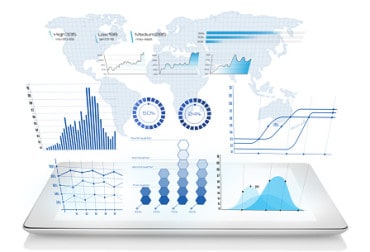
Decision intelligence focuses on making more accurate and more efficient decisions based on the knowledge of how actions lead to outcomes.
If you’ve ever been faced with decision fatigue over what to wear in the morning or gotten frustrated with a group’s lack of consensus over where to eat for lunch, you understand how crucial time can be in decision-making. Decision intelligence, a crucial field of data analytics, aims to reduce the time to decision and help eliminate the uncertainty organizations can be making changes.
Decision intelligence is officially on the hype cycle. Gartner proclaims it a top data and analytics trend for 2021, but we predict it will move quickly from trend to established principle. Here’s what you need to know.
See also: Lack of Real-Time Data Slows Down Decision-Making
What is decision intelligence?
This discipline focuses on making more accurate and more efficient decisions based on the knowledge of how actions lead to outcomes. Machines can process information the way we do, but they can handle much more significant amounts of inputs than the human brain.
Machines can analyze chains of cause and effect to find the most desirable outcome, offering a quantitative structure for organizational decision making. Machine learning algorithms take existing data and provide value through insights that shorten the time to decide and reduce the risk of making the wrong decision.
Decision intelligence brings machine intelligence into the world of business needs. Nowhere is this type of processing more important and more valuable than increasing decision ROI just by accelerating the time to a decision. With enterprise-level decisions, this process could take weeks or months, not even considering the uncertainty principle. AI can change that for the better.
How does it work?
Decision intelligence works through five steps, much like the human decision-making model does. Humans are often unaware of the specific process they go through even to make “gut” decisions, but the process is one of distinction because it’s very human.
- Observe: Models collect relevant information from a variety of sources, including historical data, transactional, etc.
- Investigate: Sifting through information, models begin to see a picture of potential outcomes.
- Model: Generalizing outcomes allows models to pursue alternate options based on existing capabilities.
- Contextualize: This step offers a range of executable actions and considers the complexity of the situation.
- Execute: The decision is chosen. The action is taken.
These decisions models use one of three types:
- Human decisions: Machines merely visualize and provide insight. Decision-making rests solely with humans.
- Machine decisions: Machines make decisions independently and can’t always explain why
- Hybrid decisions: Both humans and machines work together to come to an outcome. Machines, in this case, can recommend or take action depending on the task.
Why use it?
Decision intelligence has several benefits for businesses using these models. The biggest one is simply reducing the time it takes for a business to come to a decision. As businesses grow, decision-making becomes more complex, involving hundreds of people, dozens of departments and locations, multiple chains of command, cross-border needs…it can take an astounding amount of time to make a decision. Slow decisions leave value on the table.
Businesses also reduce risk, balancing the need for speedy decision-making with making the right decision. Machines process information quickly and can process more of it at a time, helping reduce the risk of unforeseen outcomes without slowing down the process itself.
Machines can also help reduce decision-making biases humans run into in their decision-making. A preference for doing things a certain way could lead an enterprise to favor one approach over another despite growing evidence that it’s not working. Sunk costs can extend initiatives far past their welcome. Machines can overcome some of the pitfalls humans have in decision-making.
Who is using it?
There are several industries making use of decision intelligence to reduce the time to decision and the risk. They’ve optimized gargantuan operations and evolved as a result.
- Transport: According to IBM, a trucking company was able to reduce millions of unnecessary miles through decision intelligence and improve driver retention. Driving and training are two of transport’s biggest ongoing expenses, so this equaled millions of dollars in ROI.
- Energy: In another IBM partnership, Red Eléctrica de España demonstrated a proof of concept, developing sophisticated supply and demand forecasting models and saving potentially hundreds of hours of effort in maintenance.
- Finance: Back in 2018, Fiserv made waves offering Mastercard Decision Intelligence, designed to improve fraud detection and reduce false declines. The process allowed financial services better control over deciding whether transactions remained fraudulent and helped improve customer trust.
- Media and entertainment: Some of the most salient examples of decision intelligence is the recommendation engine. Netflix algorithms analyze customer behavior to make combing through thousands of choices easier, keeping CLV high and customers on the platform.
- Telecoms: Decision intelligence not only optimizes control and maintenance of distributed, large-scale systems, but it can even drive marketing efforts. Verizon found that home routers could handle higher speeds, leading the company to increase its advertised speeds. The result was a surge in sales.
- Retail and grocery: Customer-facing industries are under increasing pressure to move quickly, act on trends, and reduce friction between shopping contact points. Albertsons, a grocery store chain, invested big in AI, including intelligence, allowing it to drive revenue-producing activities with efficiency and speed.
More industries are coming to the same conclusions. With easier decision-making, even enterprise-level movements lose bulk and reduce risk. Companies can pivot quickly to meet demand and become better insulated against disruptions.
Like all tech-focused initiatives, having the right talent to understand decision frameworks and deploy AI models is crucial. That’s not the only requirement, however. A greater understanding of technology across the board, from c-suite to teams, ensures that an organization can implement decision intelligence without sabotage. If teams don’t trust the machine, these decisions will never work.
How companies can get started in decision intelligence
Companies also need a deep understanding of decision frameworks in terms of business value. IT teams running these models must understand organizational objectives and implement best practices for decision-making.
Companies also need technology that optimizes decision-making, allows iteration, and offers the flexibility to scale up or down. Organizations could see a bigger budget for technology, but with the right process in place, the ROI is worth it.




























